Saturday, September 6: Mississippi Mud
OKAY, THAT’S A WRAP
by John M. Floyd
All of us who love fiction—especially the mystery/suspense genre—know the importance of a good ending. According to Mickey Spillane, “Nobody reads a mystery to get to the middle. They read it to get to the end … The first page sells that book, and the last page sells your next book.”
And not just books. The same is true of plays, screenplays, and short stories as well. The ending is often the part that determines whether a reader (or viewer) looks forward to that author’s (or director’s) next project.
The ending is also the one thing we’re most likely to remember, afterward. In the case of movies seen long ago, I can think of only a few that I remember for something other than their endings. Those films are “Ben Hur” (the chariot-race scene), “Stand by Me” (the train chasing the boys across the trestle), and “Bullitt” (the San Francisco car chase). What 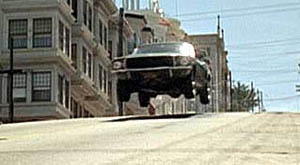 makes those three scenes unusual is that they didn’t happen at the endof the stories, they happened in the middle. The big payoff in a story or novel or film almost always takes place in the final moments.
makes those three scenes unusual is that they didn’t happen at the endof the stories, they happened in the middle. The big payoff in a story or novel or film almost always takes place in the final moments.
What Makes the Payoff Pay Off?
I like to think an ending has only one requirement: it must be satisfying. It doesn’t have to be happy, or even definite—but it must satisfy the reader. I’m reminded of the old saying that in a good ending, the characters get what they deserve. I like that idea. Sometimes what it takes to satisfy us is to have the good folks in a story, as well as the bad folks, get what we feel is coming to them.
Another way to make an ending satisfying is to leave the reader/viewer with something meaningful to think about. (The often-maligned “unresolved” or “open-ended” story—“No Country for Old Men” comes to mind.) In the words of a friend of mine, those stories don’t really end,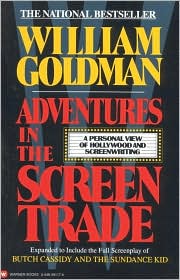 they just stop.
they just stop.
The great William Goldman said, in his book Adventures in the Screen Trade, that one way to achieve a satisfying ending is to shorten the time between “the moment of greatest tension” and the end credits. When I first read about that technique years ago, I don’t think I fully realized how effective it is. One of the worst things a writer can do is drag out the final moments of a piece of fiction—especially a short story. When you’re wondering what words should follow the climax, two of the best are THE END.
A Cliffhanger Example
To illustrate his point, Goldman described the final scenes of the film “North by Northwest.” (I’m paraphrasing here, but I remember most of it.) He said the moment of highest tension was the scene where Cary Grant is dangling from a rock ledge on Mount Rushmore, with one hand clinging to an also dangling Eva Marie Saint and the other hand clinging to a ledge above them. Villain Martin Landau is stepping on Grant’s fingers while also holding a container of microfilm on which hinges the fate of the world. That scene is indeed suspenseful, for both the characters and the viewers. Then Goldman reveals that the length of time between that instant and the moment the movie ends is . . . 43 seconds. Yep, you heard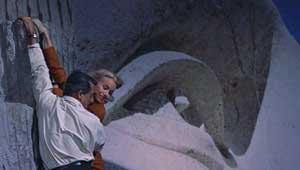 right. And during that time, all the following things take place: The villain is overcome, the villain’s boss is arrested, the microfilm is saved, the dangling hero is saved, the dangling young lady is saved, the two of them get married, and they take off on a train for their honeymoon.
right. And during that time, all the following things take place: The villain is overcome, the villain’s boss is arrested, the microfilm is saved, the dangling hero is saved, the dangling young lady is saved, the two of them get married, and they take off on a train for their honeymoon.
How on earth, you might well ask, can all that come to pass, in less than a single minute of screen time? (That translates, by the way, to less than a single page of screenplay.)
Here’s what happens: (1) Martin Landau is shot; (2) because of that, his shoe lifts from Cary Grant’s poor crunched fingers; (3) the container of microfilm falls safely to the ledge; (4) Landau falls unsafely to his death; (5) we see a faraway policeman holding a smoking rifle; (6) behind the shooter we see master villain James Mason being led away in handcuffs; (7) Cary, since his fingers are no longer being stepped on, pulls his true love up onto the ledge with him; (8) as he pulls her up the scene changes to him pulling her up not onto a ledge but onto a bed in an upper berth of a train car; (9) he addresses her as “Mrs. Thornhill,” which is his last name; and (10) the train disappears into a tunnel while the words THE END appear on the screen. And all of this in 43 seconds. Is Hitchcock a master, or what?
Other examples of stories that end quickly after the most exciting scene: “Bonnie and Clyde”, “Jaws”, “Butch Cassidy”, “The Graduate”, “Unforgiven”, “Rocky”, “Witness”, “Dirty Harry”, “Signs”, “Casablanca,” and many more. Even “The Sound of Music.”
Anticlimactic Tactics
By contrast, some endings drag on way too long. Since most are from forgettable stories and movies, I won’t list any here—but I will mention several excellent movies that had too-long endings, only because most good ones don’t. One was—surprisingly—another Hitchcock film: In “Psycho” we all remember the moment of highest tension, but what you might not remember is that after the dead-old-woman-in-the-chair moment in the root cellar, there was an extremely long scene of Tony Perkins in a straitjacket and a padded cell, with a psychiatrist explaining to us that Perkins was, well, a psycho. The movie was otherwise so spellbinding that few of us even seemed to notice the boring seven- or eight-minute “downer” before the actual end of the film. Another example is the outstanding western “Open Range” with Kevin Costner and Robert Duvall. There were, after the gunfight climax, several long, long scenes of the guy and girl finally getting together and preparing to live happily ever after. And my third example is the third movie in the “Lord of the Rings” trilogy. I loved them all, but I honestly wondered if that last one would ever end.
Maybe the rule here is that if you’re going to extend the birthday party long past the time where the final gift is opened and the final balloon is popped, you better make damn sure the party’s a really good one up to that point. There’s a reason that the fireworks displays always save their best (and loudest) for last.
In Conclusion
Just think of the time-proven curve (arc) that represents the typical three-act story. It slopes gradually upward as tension builds to a climax and then drops off at the end. Not slowly, either—it drops off fast. And for short stories, really fast.
It could be that that’s true for columns as well. Maybe it’s time to wrap this one up.

















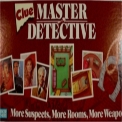


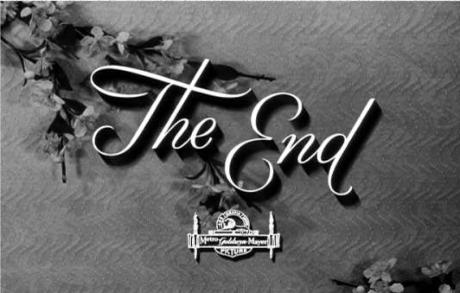
I have noticed that novels often have a chapter after the climax to tie up loose ends. I just read Thomas Perry’s NIGHTLIFE, and after the good guy and the bad guy battle to the death there is a chapter with the survivor going off to a different city and meeting with another character. I’m glad it was there, but I don’t know if you’d put it in a movie…
How about short stories that jump to the climax? The first one that pops into my mind is that classic “The Most Dangerous Game.” by Richard Connell http://tinyurl.com/2qlg3w in which the final dramatic battle tales place between the last two sentences.
John’s piece today inspired my column for this coming Monday, which also touches upon such matters.
Rob, I sort of like it when the next-to-last chapter in a book is the final confrontation and the following chapter ties up the loose ends. With short stories, though, I usually prefer a really quick ending after the climax, maybe even (as you mentioned) only a sentence or two.